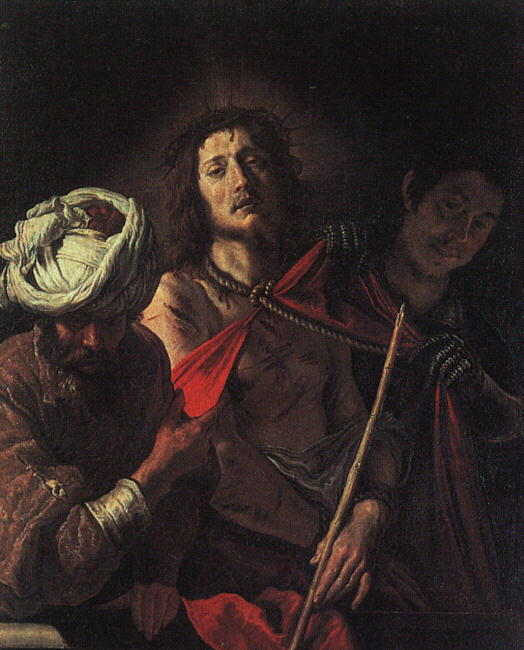Description
The painting Ecce Homo by Domenico Fetti is a masterpiece of Italian Baroque art from the 17th century. This work is a representation of the biblical scene in which Pilate presents Jesus to the crowd, showing his body scourged and crowned with thorns. The composition of the painting is impressive, with Pilate and Jesus at the center of the scene, surrounded by a multitude of figures who observe the scene with different expressions of surprise, compassion and hatred.
Fetti's artistic style is evident in painting, with his technique of loose brushstrokes and use of dark, dramatic colours. Light and shadows play an important role in the work, creating an atmosphere of tension and drama. The red color of Jesus' tunic contrasts with the white of his skin and the dark blue of Pilate's mantle, creating a striking visual effect.
In addition to its artistic quality, the history of the Ecce Homo painting is interesting. The work was commissioned by Cardinal Alessandro Ludovisi, nephew of Pope Gregory XV, and was in his private collection. After the cardinal's death, the painting was sold to the Borghese family, where it remained for several centuries before being acquired by the Museo del Prado in Madrid in 1936.
One of the lesser known aspects of the painting is that Fetti included his own figure in the crowd watching the scene. He stands at the bottom right of the painting, wearing a black hat and a serious face. This self-portrait is a curious and personal detail that shows Fetti's ability to create a realistic and emotional work of art.
In short, Domenico Fetti's painting Ecce Homo is a masterpiece of Italian Baroque art, with an impressive composition, a unique artistic style and an interesting story. Its artistic quality and its religious significance make it one of the most outstanding works in the Prado Museum in Madrid.

